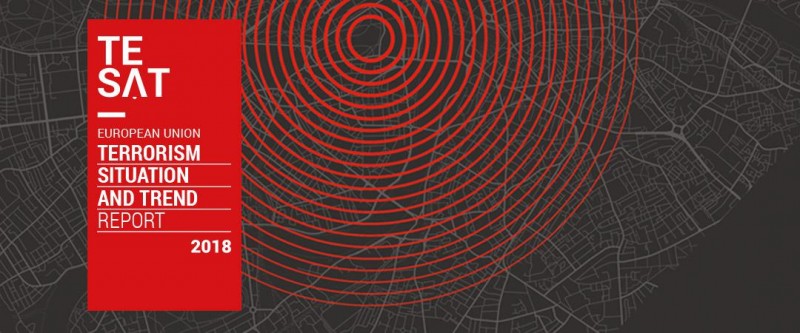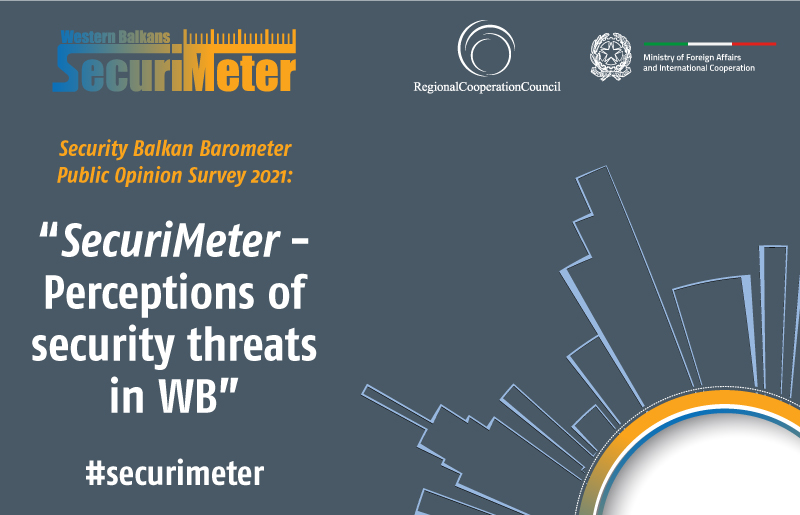- Home/
- News
Terrorist threat in the EU remains high despite the decline of IS in Iraq and Syria
New EU Terrorism Situation and Trend Report describes terrorist incidents and activities on European soil
In 2017, 68 innocent victims lost their lives as a result of terrorist attacks in the European Union (EU) – reason enough for Europol not to reduce its efforts in combatting terrorism in all its forms. Even though the number of casualties decreased last year, the number of attacks on European soil did not. The number of jihadist-inspired attacks more than doubled. Europol’s 2018 EU Terrorism Situation and Trend Report (TE-SAT), published today, provides a concise overview of the nature of the terrorist threat the EU faced in 2017.
“The numbers in this report are not just statistics. We must never forget that behind every number, there is an innocent victim. It therefore goes without saying that supporting Member States to combat terrorism will remain a top priority for Europol. To fight terrorism, it is essential to have optimal information exchange and accurate data”, said Europol’s Executive Director Catherine De Bolle.
Main trends
Nine EU Member States reported a total of 205 foiled, failed and completed terrorist attacks in 2017 (2016: 142). This is a 45% increase compared to 2016 and a shift from a downward trend that started in 2014.
These attacks killed 68 victims and left 844 injured. Nearly all casualties (62) were the result of jihadist terrorist attacks. The number of jihadist terrorist attacks grew from 13 in 2016 to 33 in 2017.
Overall, ethno-nationalist and separatist attacks accounted for the largest proportion (137) of the attacks. More than half of these (88) were security-related incidents in Northern Ireland. The number of attacks carried out by left-wing and anarchist terrorist groups and individuals decreased slightly in 2017 (24). Five foiled, failed or completed terrorist attacks (2016: 1) attributed to right-wing extremists were reported for 2017, leading to the arrest of 20 suspects (2016: 12).
975 individuals were arrested in the EU for terrorism-related offences (2016: 1 002). Most of these arrests were related to jihadist terrorism, for suspicion of participating in activities of a terrorist group; planning and preparing attacks; and facilitation activities such as dissemination of propaganda, recruitment and financing of terrorism.
"Terrorism will continue to be a threat for the world, Europe, our citizens, our security and our way of life for the foreseeable future. Last year, while jihadist-inspired attacks increased, so did our preventive actions – with at least 11 attacks foiled. This is the strongest testament to the necessity of working together to defeat terrorism. Europol's annual report leaves no doubt that the problem affects all of us equally, and we can only address it with collective action, unity of purpose, and above all trust. A genuine and effective Security Union in Europe is the surest way to tighten the screws on terrorists until they no longer have space to commit their atrocities", added Dimitris Avramopoulos, European Commissioner for Migration, Home Affairs and Citizenship.
"As this latest EU Terrorism Situation and Trend Report shows, Europe continues to be a target for terrorism – we need to keep our collective eye on the ball, and strengthen our efforts at EU level to deny terrorists the means they need to carry out attacks including arms, explosives and funding; work on evolving areas such as CBRN threats; and continue to tackle radicalisation and all types of violent extremism", highlighted Julian King, European Commissioner for the Security Union.
More details and context can be found in the report itself. The report highlights some of the main trends.
· Recent attacks by jihadist terrorists have followed three trends:
· the preference for attacking people, rather than other targets, to provoke an emotional response from the general public (Paris, May 2018; Barcelona, August 2017);
· attacks on symbols of authority (Liège, May 2018; Trèbes, March 2018);
· attacks on symbols of Western lifestyle (Manchester, May 2017).
· New attacks in the EU by jihadist terrorists following one of these patterns, or a combination thereof, are very likely.
· Along with the increase in jihadist attacks, their preparation and execution have become less sophisticated.
· Jihadist terrorists are often found to be lone actors, either preparing themselves alone or facilitated by friends and relatives.
· However, online propaganda and networking via social media are still essential means by which to recruit, radicalise and raise money. The often rudimentary knowledge of Islam makes potential attackers vulnerable to influence and manipulation.
· Recent jihadist attacks were committed primarily by home-grown terrorists, radicalised without having travelled to join a terrorist group abroad. Among the highly diverse range of attackers, some were known to police, but not for terrorist activities, and most had no direct links to any jihadist organisation.
· The degradation of the so-called Islamic State’s (IS) organisational structures does not imply a reduction of the threat of jihadist terrorism. Terrorist activities in the EU ordered, guided or inspired by IS, al-Qaeda or other jihadist organisations remain a real possibility.
Source: Link



 Development of specialized PCVE web site is funded by EU FUNDS CN 2017-386/831 - "IPA II 2016 Regional Action on P/CVE in the Western Balkans"
Development of specialized PCVE web site is funded by EU FUNDS CN 2017-386/831 - "IPA II 2016 Regional Action on P/CVE in the Western Balkans"